Through art and storytelling, La Benida Hui empowers children to become environmental heroes, using everything from SpongeBob to microorganisms to reimagine their relationship with nature.
“I tell the students that they have superpowers. It needs to be emphasized that their choices can make a difference,” says Hui, an environmental artist and education specialist.
For her second year as Badou Elementary’s artist in residence, Hui leads creative lessons on environmental protection, where students reflect on their relationship with nature and transform beach waste into artworks.
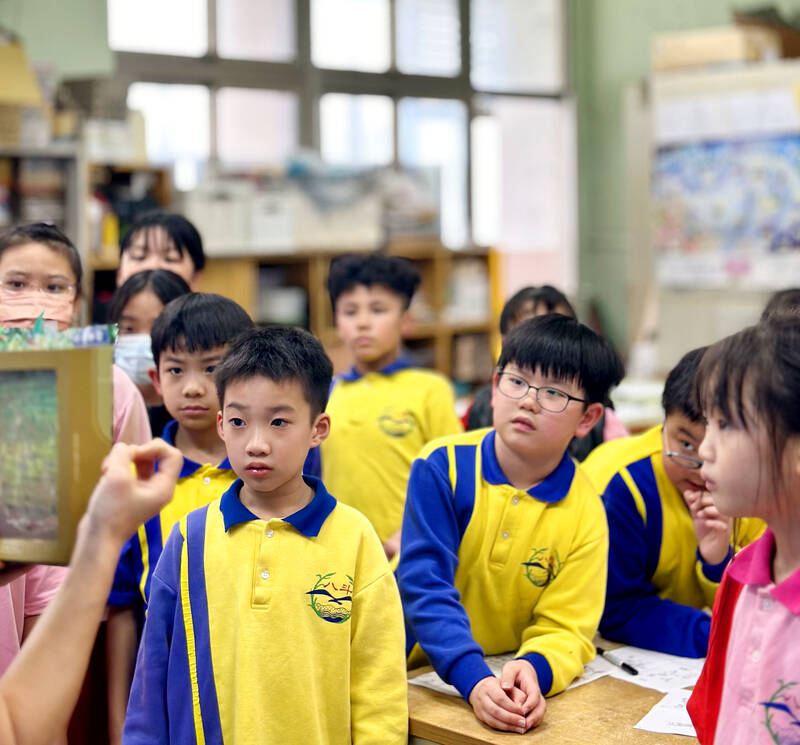
Photo: Bonnie White
Standing in lush green hills overlooking the ocean with land extending into the intertidal zone, the school in Keelung hosts 516 students from grades one to six who attend Hui’s annual workshop.
For Che Hsiao-kai (車小愷), director of educational affairs, the school’s proximity to the coastline is an opportunity for children to get involved with environmental protection from an early age.
“We want our children to protect our ocean,” Che says.
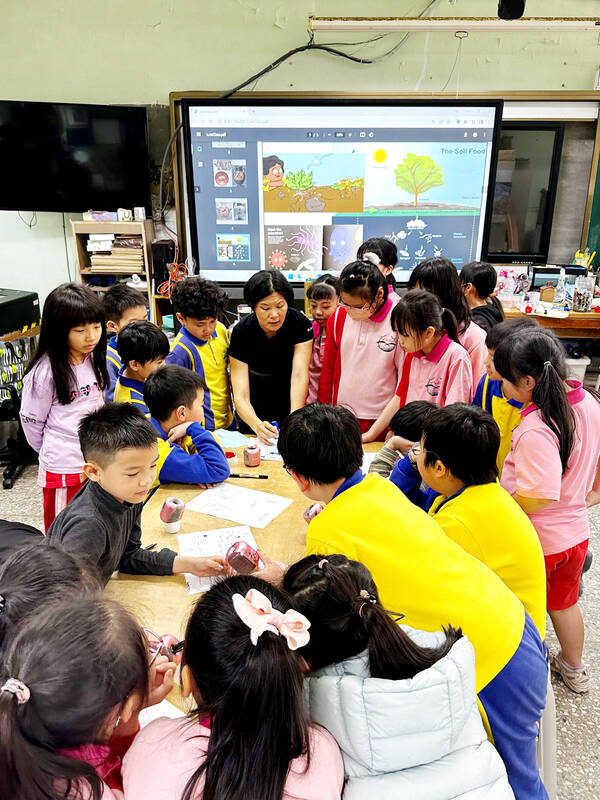
Photo: Bonnie White
At the school’s entrance gate, a dragon made of recycled ocean debris welcomes visitors. The colorful installation is the first collaborative work students produced with Hui last year.
CLIMATE EDUCATION
After Hui settled in Taiwan in 2014, she says a 20-day research voyage from Bermuda to Iceland studying microplastics with scientists changed her life.
Hui turned to art to inspire youth environmental action. Her vision met its match in Che, who was looking for an artist to help the school transform complex environmental issues into tangible experiences that students can relate to.
“Our curriculum is comprehensive, but [Hui’s] art gives children new ways to express and internalize environmental responsibility,” Che says.
For science teacher Eric Chen (陳昇祿), Hui’s workshops allow students to understand changes brought by climate change rather than just receive knowledge passively.
“The school curriculum indeed does not delve deeply into climate and environmental protection, especially in terms of fostering a connection to the land,” Chen says.
For the school’s end-of-year community exhibition, Hui is building life-size weather panels featuring student artworks that color code Keelung’s monthly rainfall data from 2014 to last year.
EDUCATIONAL CHALLENGES
Hui channels her art into climate education, but the path is filled with hurdles.
Finding climate change information in Taiwan is a struggle. Library books, she says, are outdated, and Hui even met a science teacher who dismissed rising temperatures as unrelated to human behavior.
While Badou Elementary promotes environmental education, Hui found that cultural and educational norms left students hesitant, lacking both confidence and imagination.
“Art and creativity are the foundation to build confidence and it allows [exploration] without fear, but they don’t value the arts here in Taiwan,” Hui says.
ENVIRONMENTAL AWARENESS
Photos of plastic waste adrift at sea, graphs tracking microplastics through living organisms and animations of microorganisms bring the workshop to life.
Hui builds proximity between children and their surrounding environment, incentivizing them to reflect on the impact of unsustainable habits and empowering them to become more mindful stewards of the planet.
“Taiwan is your home, right? The ocean is also your home,” Hui says.
By swapping textbooks for trash art and superheroes for real-life action, Hui turns climate education into a hands-on mission.
For Che, Badou Elementary’s coastal location and creative approach to climate education offer a powerful model for fostering environmental responsibility from an early age.
“Students are the seedlings — they are those who will lead future generations and need to build awareness towards their living environment,” Che says.
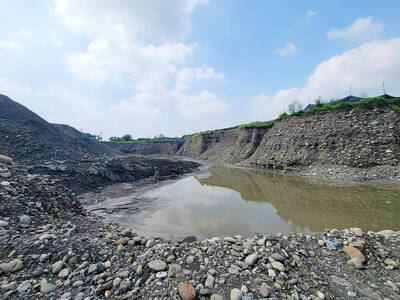
Last week the story of the giant illegal crater dug in Kaohsiung’s Meinong District (美濃) emerged into the public consciousness. The site was used for sand and gravel extraction, and then filled with construction waste. Locals referred to it sardonically as the “Meinong Grand Canyon,” according to media reports, because it was 2 hectares in length and 10 meters deep. The land involved included both state-owned and local farm land. Local media said that the site had generated NT$300 million in profits, against fines of a few million and the loss of some excavators. OFFICIAL CORRUPTION? The site had been seized
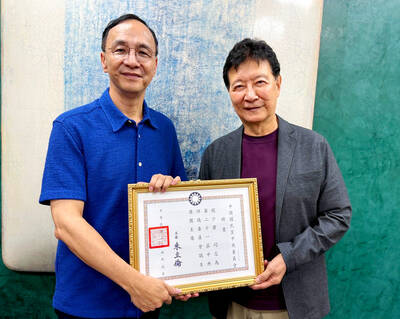
Next week, candidates will officially register to run for chair of the Chinese Nationalist Party (KMT). By the end of Friday, we will know who has registered for the Oct. 18 election. The number of declared candidates has been fluctuating daily. Some candidates registering may be disqualified, so the final list may be in flux for weeks. The list of likely candidates ranges from deep blue to deeper blue to deepest blue, bordering on red (pro-Chinese Communist Party, CCP). Unless current Chairman Eric Chu (朱立倫) can be convinced to run for re-election, the party looks likely to shift towards more hardline
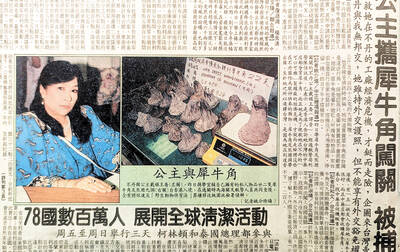
Sept. 15 to Sept. 21 A Bhutanese princess caught at Taoyuan Airport with 22 rhino horns — worth about NT$31 million today — might have been just another curious front-page story. But the Sept. 17, 1993 incident came at a sensitive moment. Taiwan, dubbed “Die-wan” by the British conservationist group Environmental Investigation Agency (EIA), was under international fire for being a major hub for rhino horn. Just 10 days earlier, US secretary of the interior Bruce Babbitt had recommended sanctions against Taiwan for its “failure to end its participation in rhinoceros horn trade.” Even though Taiwan had restricted imports since 1985 and enacted

Enter the Dragon 13 will bring Taiwan’s first taste of Dirty Boxing Sunday at Taipei Gymnasium, one highlight of a mixed-rules card blending new formats with traditional MMA. The undercard starts at 10:30am, with the main card beginning at 4pm. Tickets are NT$1,200. Dirty Boxing is a US-born ruleset popularized by fighters Mike Perry and Jon Jones as an alternative to boxing. The format has gained traction overseas, with its inaugural championship streamed free to millions on YouTube, Facebook and Instagram. Taiwan’s version allows punches and elbows with clinch striking, but bans kicks, knees and takedowns. The rules are stricter than the